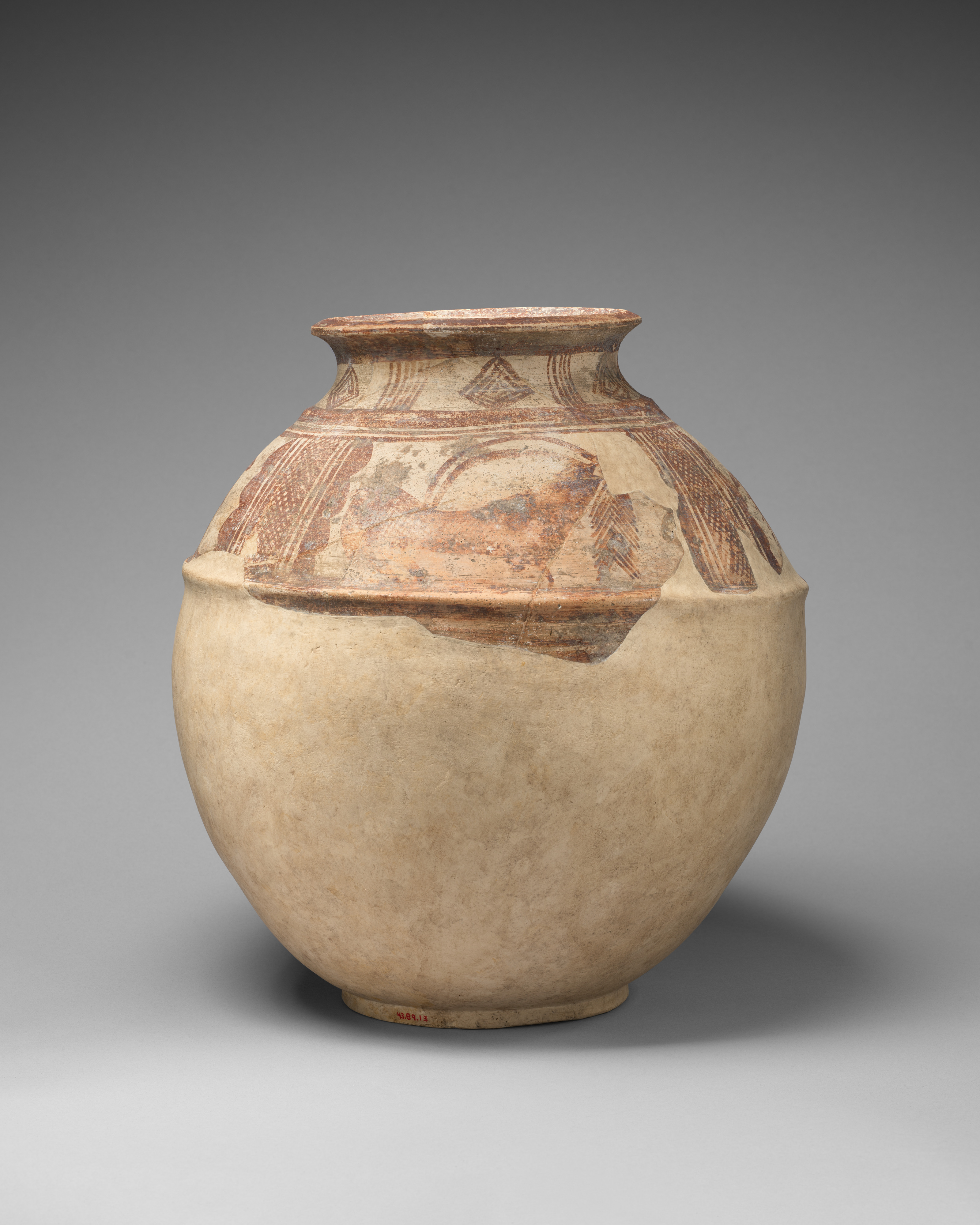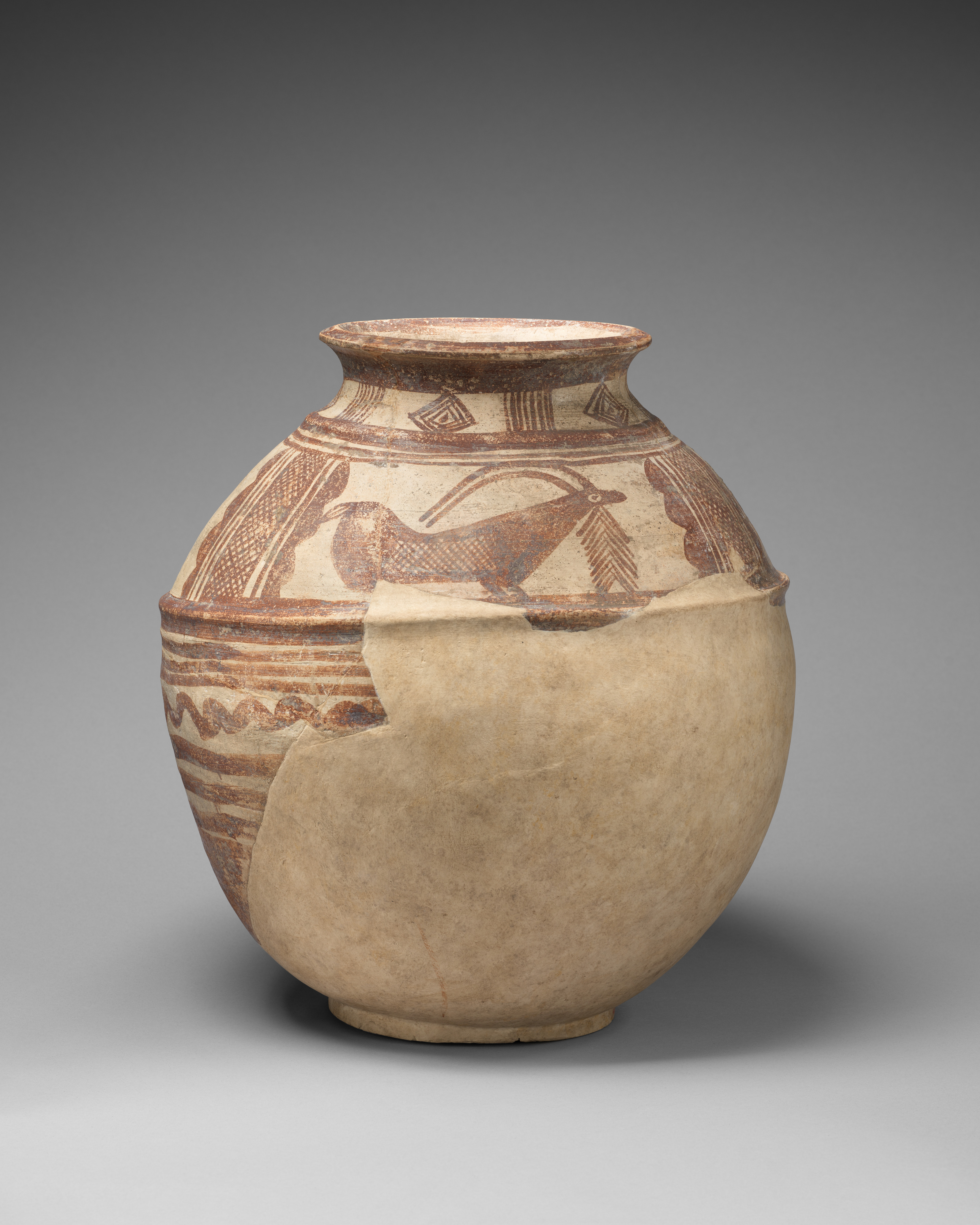Jar with ibexes
Not on view
This jar, which is heavily restored, has a globular body with a raised ridge at the shoulder and an everted rim; a smaller ridge circles the neck. It is made of a buff clay, and has dark brown geometric decoration. On the shoulder these decorations frame images of ibexes. The ibex has rounded hindquarters, and a triangular chest and neck. Two thin horns rise from the back of its head and curve back, nearly touching his rump. The ibex has a large eye and a long goatee rendered with chevrons; his body is decorated with crosshatching.
This jar was found at Kamterlan I, a mound in Luristan in the Zagros Mountains of western Iran that was the site of both settlement and burials. It is not clear what purpose it served. Its size makes it suitable for storage, but its decoration suggests the possibility of display as well; perhaps it was used for serving. The raised ridges at the shoulder and neck might suggest that the shape of this vessel imitates a metal prototype. The ibex is a distinctly Iranian motif, as they are native to the Zagros Mountains of western Iran, but did not live, for example, on the plains of Mesopotamia. Thus they are a marker of the unique, mountain identity of the people living in Iran in the Bronze Age.
It is often thought that the inhabitants of Luristan in this period were pastoral nomads, who moved with their herds from the high valleys of the Zagros during the summer to lowland pastures in the winter. This theory arises from the dearth of evidence for settlements, and the occurrence of isolated cemetery sites. The remains of buildings at Kamterlan I, however, indicates sedentary society, and it is likely pastoralism was practiced alongside agriculture there.
Due to rights restrictions, this image cannot be enlarged, viewed at full screen, or downloaded.
This artwork is meant to be viewed from right to left. Scroll left to view more.





